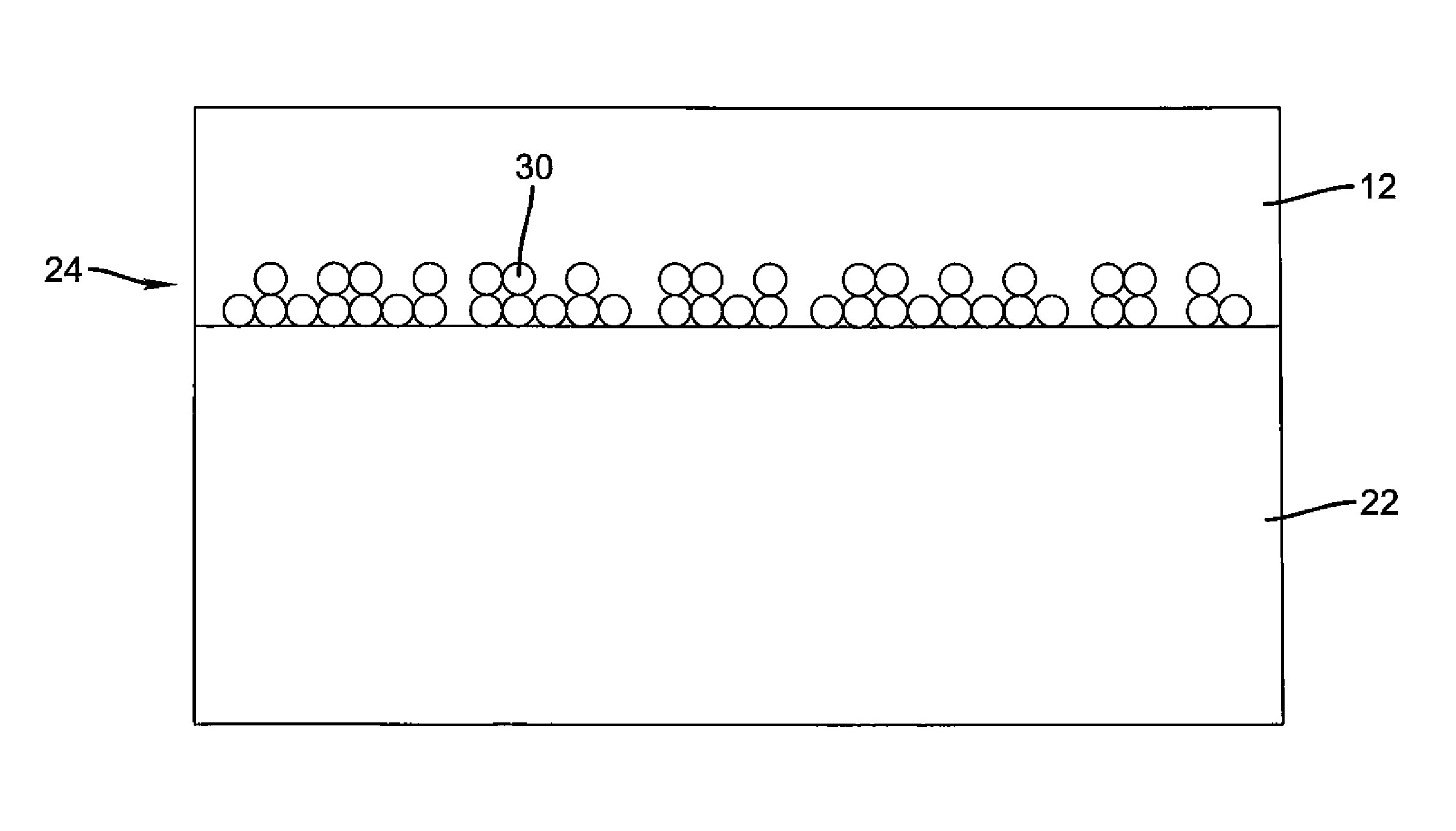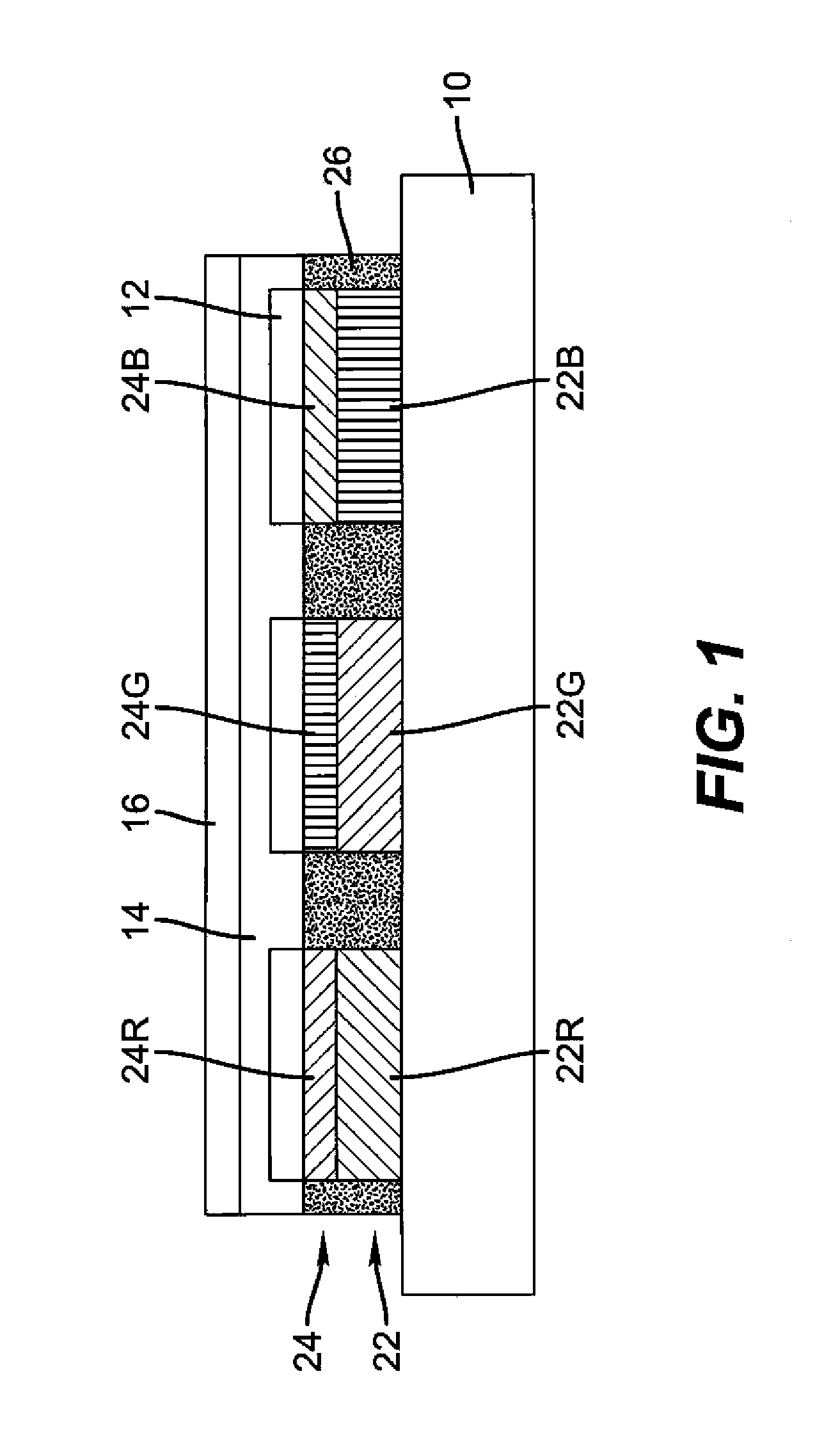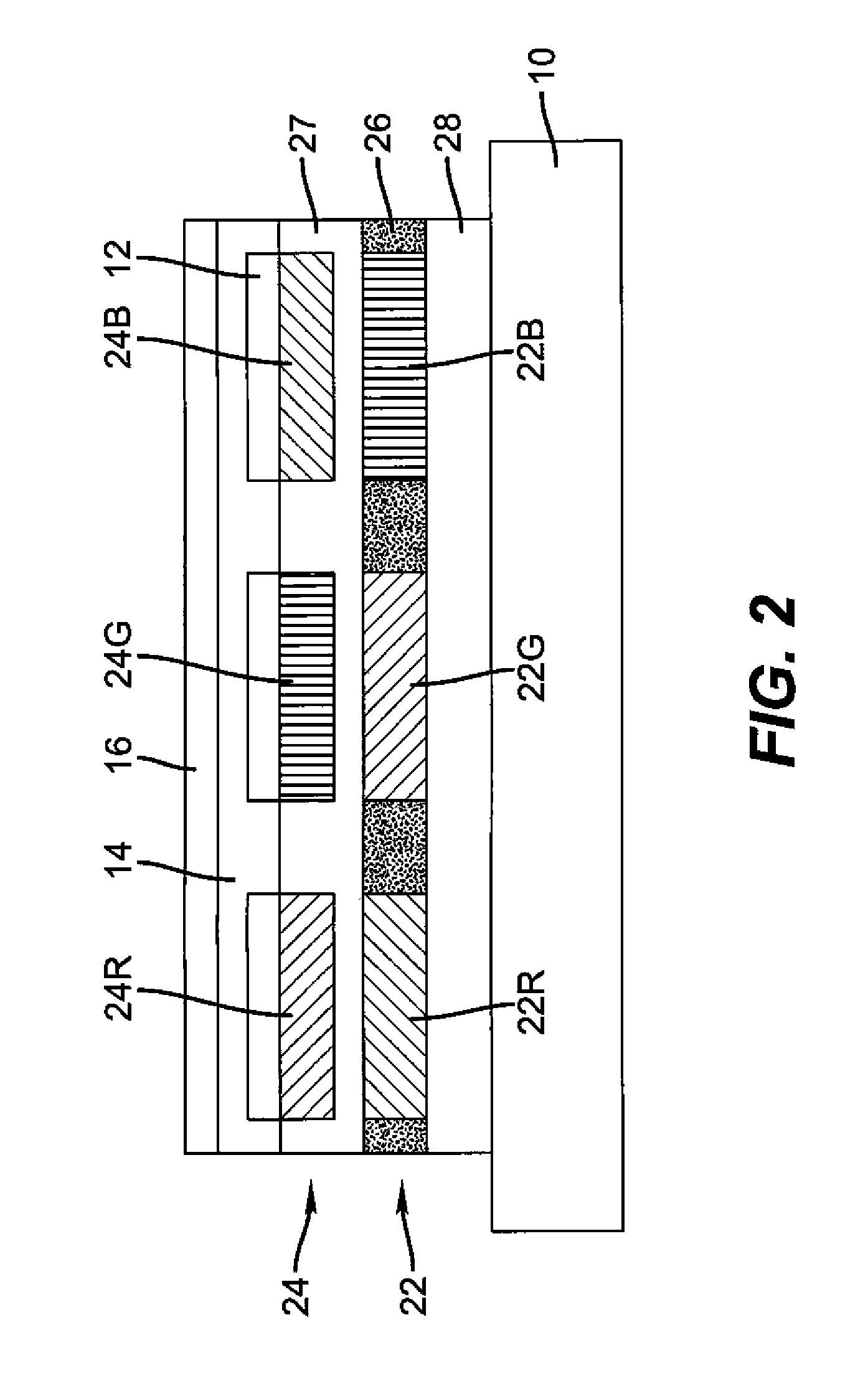Color-change material layer
a technology of color-changing materials and layers, applied in the direction of discharge tubes/lamp details, organic semiconductor devices, discharge tubes luminescnet screens, etc., can solve the problems of limited resolution and size, limited design efficiency, and current technology, such as the use of shadow masks, to achieve the effect of improving the light output and sharpness of light-emitting devices
- Summary
- Abstract
- Description
- Claims
- Application Information
AI Technical Summary
Benefits of technology
Problems solved by technology
Method used
Image
Examples
Embodiment Construction
[0022]Referring to FIG. 1, one embodiment of an organic or inorganic LED device according to the present invention comprises a substrate 10, one or more color filters 22 formed above the substrate 10 and transmitting light having a first frequency range, a layer 24 of color-change material formed above the color filter 22 that converts light of a second frequency range higher than the first frequency range to light of the first frequency range, a first transparent electrode 12 formed adjacent to the color-change material layer 24; one or more layers 14 of organic material formed over the transparent electrode 12, at least one of which emits light in at least the second frequency range in response to a current passed there-through; and a second electrode 16 formed over the one or more organic layers 14. The color-change material layer 24 is substantially non-scattering to light of the first frequency range, and additionally comprises a transparent material having a refractive index o...
PUM
 Login to View More
Login to View More Abstract
Description
Claims
Application Information
 Login to View More
Login to View More - R&D
- Intellectual Property
- Life Sciences
- Materials
- Tech Scout
- Unparalleled Data Quality
- Higher Quality Content
- 60% Fewer Hallucinations
Browse by: Latest US Patents, China's latest patents, Technical Efficacy Thesaurus, Application Domain, Technology Topic, Popular Technical Reports.
© 2025 PatSnap. All rights reserved.Legal|Privacy policy|Modern Slavery Act Transparency Statement|Sitemap|About US| Contact US: help@patsnap.com



